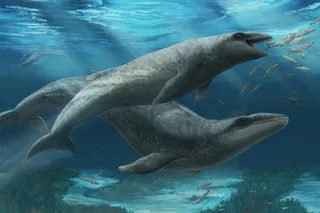A new 3D model of the Titanic, produced using 700,000 images shot by submersibles, reveals the 111-year-old shipwreck to be in a battered condition. Such landmarks as the grand staircase, now lie in complete ruins, while “rusticles” formed by iron-eating bacteria cover the surface.
The clock is ticking for the sunken ocean liner, once thought to be “unsinkable,” as experts say it has mere decades before it succumbs completely to the ocean floor.
To accelerate research, the new model provides a clear view of the ship and surrounding debris field, a massive improvement on past submersible footage, which captured only narrow angles of the gloomy wreck.
The ship lies about 12,500 feet below the surface of the Atlantic, some 400 miles south-southeast of the Newfoundland coast.
While the ship sank before the outbreak of WWI, it wasn’t rediscovered until 1985, by a pair of submersibles called Argo and Jason that ...














